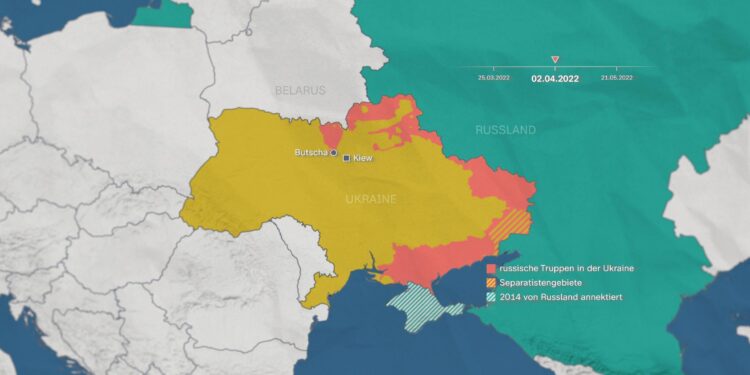Ukraine has intensified its strategic assault on Russia’s energy sector, deploying a fresh wave of long-range drones targeting critical oil infrastructure. This latest series of strikes marks a calculated effort to disrupt Moscow’s most valuable industry amid the ongoing conflict, further escalating economic pressures on Russia. The attacks underscore Kyiv’s commitment to leveraging advanced technology to weaken Russian resources, signaling a new phase in the war that extends beyond the battlefield and into the realm of energy security.
Ukraine Escalates Drone Attacks Targeting Russian Oil Infrastructure
In a bold escalation of its aerial offensive, Ukraine has intensified its deployment of long-range drones to strike at Russia’s critical oil infrastructure. Targeting refineries and pipelines, these attacks aim to disrupt the energy supply chain that forms the backbone of Russia’s economy. Analysts warn that the sustained drone campaign not only threatens immediate operational capabilities but also exerts broader pressure on Moscow by impacting its revenue from oil exports.
Key aspects of the drone campaign include:
- Precision targeting of storage facilities and transport hubs
- Use of advanced drones capable of evading Russian air defenses
- Coordination with broader military operations to maximize impact
- Disruption of supply routes critical to both domestic and international markets
| Target | Location | Impact | Estimated Downtime |
|---|---|---|---|
| Novoshakhtinsk Refinery | Rostov Region | Output halved | 2 weeks |
| Kogalym Oil Depot | Khanty-Mansi Autonomous Okrug | Storage compromised | 1 month |
| Transneft Pipeline Terminal | Saratov Region | Supply interruptions | 3 weeks |
Implications for Russia’s Energy Sector and Global Market Stability
Ukraine’s recent drone strikes targeting Russian oil infrastructure mark a significant escalation within the energy conflict, jeopardizing the operational stability of Russia’s most lucrative sector. These precise long-range attacks disrupt not only production but also the intricate logistics and supply chains that underpin Russia’s energy exports. The damage to refineries and storage facilities threatens to reduce output capacity in the short to medium term, potentially forcing Moscow to divert resources toward costly repairs and heightened security measures. This shift could result in increased volatility in Russia’s oil markets, compounding internal economic pressures amid ongoing geopolitical tensions.
The broader ramifications reverberate through the global oil market, as Russia remains a critical supplier to Europe and several other regions. Persistent damage to production sites may fuel price spikes and supply uncertainty, particularly if insurance firms and trading partners begin refraining from engaging with compromised Russian assets. Key implications include:
- Heightened market volatility in crude oil and refined products
- Potential realignment of energy supply chains toward alternative sources
- Increased geopolitical risk premiums embedded in oil prices
- Acceleration of strategic reserves releases by consuming nations
| Factor | Potential Impact |
|---|---|
| Oil Production Disruption | Decline of 5-10% in short term output |
| Security Spending | Increase by up to $2 billion annually |
| Global Price Volatility | Spike of up to 15% on Brent crude |
| Supply Chain Shifts | Acceleration towards Middle East & U.S. sources |
Strategic Recommendations for Strengthening Oil Facility Defenses Amid Ongoing Conflict
To effectively safeguard oil infrastructure amid persistent drone attacks, an integrated defense strategy must be adopted. Key measures include the deployment of advanced radar and electronic warfare systems capable of detecting and jamming long-range drones before they reach critical assets. Complementing technological upgrades, physical hardening of facilities with blast-resistant materials and underground storage can limit damage. Additionally, intelligence-sharing networks between military and private security entities will enhance real-time responses and threat anticipation.
Operational strategies should also focus on layered defenses and rapid incident response, employing:
- Continuous aerial surveillance via manned and unmanned platforms
- Mobile defense units capable of intercepting threats at multiple perimeters
- Decentralization of key operational nodes to minimize risk concentration
- Regular training programs simulating complex attack scenarios
| Defense Measure | Primary Benefit | Implementation Timeline |
|---|---|---|
| Electronic Jamming Systems | Neutralizes incoming drones | 3-6 months |
| Blast-Resistant Structures | Reduces infrastructure damage | 6-12 months |
| Surveillance Drone Deployment | Early threat detection | Immediate |
Final Thoughts
As Ukraine continues to intensify its drone strikes targeting Russia’s critical oil infrastructure, the conflict’s economic dimensions grow increasingly pronounced. By focusing on the adversary’s most valuable industry, Kyiv aims to undermine Russia’s capacity to sustain its military efforts. While the full impact of these long-range attacks remains to be seen, they underscore a strategic shift in warfare where economic targets have become frontline objectives in the ongoing hostilities.
















